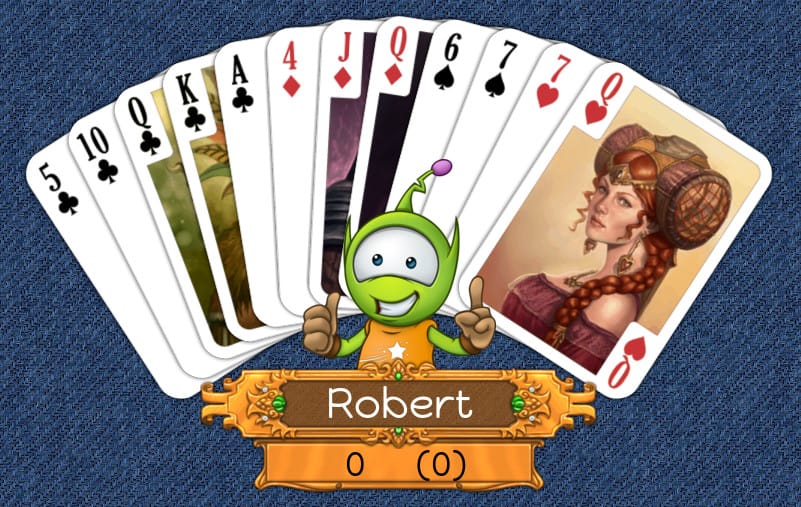

The turned-up trump card remains face up on the table until it is the dealer's turn to play to the first trick, at which point the dealer may pick up the card and place it in his/her hand. The final card, which belongs to the dealer, is turned face up to indicate which suit is trumps. The dealer deals out the cards, one at a time, face down, so that each player has thirteen cards. The cards are cut by the player on dealer's right before dealing. To speed up dealing, a second pack can be shuffled by the dealer's partner during the deal and then placed to the right ready for the next hand. The dealer has the right to shuffle last if they wish. The cards can be shuffled by any player, though usually the player to dealer's left. One may not comment upon the hand one was dealt nor about one's good fortune or bad fortune. To comment on the cards in any way is strictly against the rules.

Players draw cards to determine dealer and partners, with the two highest playing against the lowest two, who have seating rights. Whist is played by four players, who play in two partnerships with the partners sitting opposite each other. The cards in each suit rank from highest to lowest: A K Q J 10 9 8 7 6 5 4 3 2. There are many modern variants of whist played for fun.Ī standard 52-card pack is used. The traditional game of whist survives at social events called whist drives. In the 1890s, a variant known as bridge whist became popular which eventually evolved into contract bridge. By this time, whist was governed by elaborate and rigid rules covering the laws of the game, etiquette and play which took time to study and master. Many subsequent editions and enlargements of this work were published using the simpler title Cavendish On Whist. In 1862, Henry Jones, writing under the pseudonym "Cavendish", published The Principles of Whist Stated and Explained, and Its Practice Illustrated on an Original System, by Means of Hands Played Completely Through, which became the standard text. It became the standard text and rules for the game for the next hundred years. Edmond Hoyle, suspected to be a member of this group, began to tutor wealthy young gentlemen in the game and published A Short Treatise on the Game of Whist in 1742. Īccording to Daines Barrington, whist was first played on scientific principles by a party of gentlemen who frequented the Crown Coffee House in Bedford Row, London, around 1728. The game takes its name from the 17th-century whist (or wist) meaning quiet, silent, attentive, which is the root of the modern wistful. Whist replaced the popular variant of trump known as ruff and honours. Whist is a descendant of the 16th-century game of trump or ruff.

Louis Post-Dispatch of a session of the Women's Whist Club Congress, April 1906, in St.


 0 kommentar(er)
0 kommentar(er)
